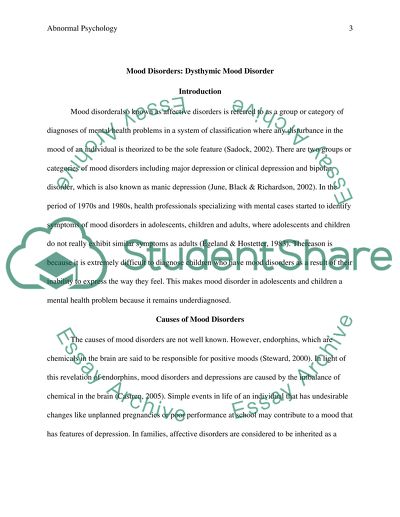Cite this document
(“Dysthymic Mood Disorder Essay Example | Topics and Well Written Essays - 1500 words”, n.d.)
Dysthymic Mood Disorder Essay Example | Topics and Well Written Essays - 1500 words. Retrieved from https://studentshare.org/psychology/1487114-abnormal-psychology
Dysthymic Mood Disorder Essay Example | Topics and Well Written Essays - 1500 words. Retrieved from https://studentshare.org/psychology/1487114-abnormal-psychology
(Dysthymic Mood Disorder Essay Example | Topics and Well Written Essays - 1500 Words)
Dysthymic Mood Disorder Essay Example | Topics and Well Written Essays - 1500 Words. https://studentshare.org/psychology/1487114-abnormal-psychology.
Dysthymic Mood Disorder Essay Example | Topics and Well Written Essays - 1500 Words. https://studentshare.org/psychology/1487114-abnormal-psychology.
“Dysthymic Mood Disorder Essay Example | Topics and Well Written Essays - 1500 Words”, n.d. https://studentshare.org/psychology/1487114-abnormal-psychology.


